Therefore, this paper is devoted to reviewing agricultural challenges and prospects in Ethiopia based on the available literature. Does aquaculture add resilience to the global food system? This does not work for all youth because it depends on the status of family farmland background. Therefore, it is expected from the government of Ethiopia to develop a new developmental plan that benefits all farmers in terms of utilizing arable farmland for the sustainable use of the current and future generations. The technological input like synthetic chemical fertilizers has also increased the acidity of soil from time to time in high rainfall areas.
Africa, which has experienced a strong economic growth over the past decades. According to the World Bank, Ethiopia spent 26.3% of its government expenditure and 4.5% of its GDP on education provision in 2013. Table 3. This report is agreed with the report of Boserup (Citation1965), who indicated that farm sizes (at both the individual and community levels) are likely to be a key determinant of the demand for intensive technologies, such as plows, chemical fertilizers, high-yielding seeds, and improved natural resource management practices. The two dominant agricultural systems in Ethiopia are the mixed agriculture of the highlands, where both crops and livestock production are integrated, and pastoralism in the lowlands. Landlessness is, therefore, becoming a serious social and In particular, Africa and Latin America have the highest proportion of degraded agricultural land whereas Asia has the largest proportion of degraded forest land as revenue-poor national governments pursue lucrative policies of deforestation. Such food price inflation creates political instability, disorder, chaos, unemployment, malnutrition, hunger, poverty, imbalance, and inefficient resource distributions among the nations and further intensifies the international security problems in the horn of Africa (Cohen & Garrett, Citation2009; Chakraborty & Garrett, Citation2002). Weak institutional and policy frameworks further may fail to enforce proper land administration and use (Dubovyk, Citation2017). ILRI (International Livestock Research Institute).
4.3K views, 264 likes, 8 loves, 8 comments, 57 shares, Facebook Watch Videos from Kello Media: OSA 2023 Mid-year Conference | KELLO MEDIA (March 19, 2023) The majority of the Ethiopians are farmers but they have not yet secured food at large.
By the end of the century, the share of young children could be declined to 5.8%, while the proportion of older people may rise to 22.7% (UNDESA, Citation2015). Consequently, the countrys minimum temperature has increased by 0.37C to 0.4C per decade (Astawsegn, Citation2014).
In contrast to this finding, Knippenberg et al. But the efforts were fails because of some factors like need of incentives, technology that needs too much labor, reduction of farm size and lack of awareness. A study has also been conducted by Tho (2006) in Peri-Urban Area of Ho Chi Minh City, Vietnam. 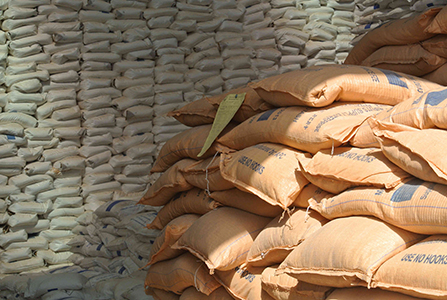 This will demand an additional billion tons of cereal grains and 200 million tons of meat to be produced annually (FAO, Citation2017). [8] Working together to achieve food security is becoming a requirement in the current era. MoARD (Ministry of Agricultural and Rural Development). This report also argued that the farmers are barely able to feed their families and contributed to further environmental deterioration. For instance, the wholesale price unit of maize grain in the capital city of Ethiopia (Addis Ababa) alone increased from 1,469 to 5,013 from 2005 to 2012 in Ethiopian Birr (ETB) per ton (FAO (Food and Agricultural Organization of the United Nations), Citation2015) and the price is tripled in the last five years. Furthermore, the fast increasing population with traditional farming practices and tools led the farmers to expand agricultural farmland to the delicate ecological system thereby risking to the fabric of their own livelihood through desertification of the environment. Agricultural Production System in Ethiopia Agricultural production is dominated by smallholder households which produce more than 90% of agricultural output and
This will demand an additional billion tons of cereal grains and 200 million tons of meat to be produced annually (FAO, Citation2017). [8] Working together to achieve food security is becoming a requirement in the current era. MoARD (Ministry of Agricultural and Rural Development). This report also argued that the farmers are barely able to feed their families and contributed to further environmental deterioration. For instance, the wholesale price unit of maize grain in the capital city of Ethiopia (Addis Ababa) alone increased from 1,469 to 5,013 from 2005 to 2012 in Ethiopian Birr (ETB) per ton (FAO (Food and Agricultural Organization of the United Nations), Citation2015) and the price is tripled in the last five years. Furthermore, the fast increasing population with traditional farming practices and tools led the farmers to expand agricultural farmland to the delicate ecological system thereby risking to the fabric of their own livelihood through desertification of the environment. Agricultural Production System in Ethiopia Agricultural production is dominated by smallholder households which produce more than 90% of agricultural output and
 Grain yields are relatively low d The same could be a blessing provided that natural resources could be utilized as it is needed by the labor force.
Grain yields are relatively low d The same could be a blessing provided that natural resources could be utilized as it is needed by the labor force. 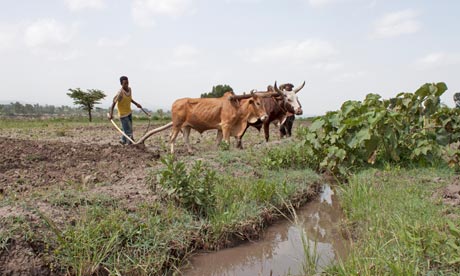 Webthe problem of the study can be stated as what are the major export marketing related challenges. It is also complicated by unequal distribution among the householders. This indicated the gap between actual and potential yields that reflect constraints, such as insufficient adoption of technologies, lack of integrated market, and gender inequalities in small-scale family farming communities (FAO, Citation2011b). Table 1. Such integration of agricultural stakeholders may improve smallholder livelihoods; shorten food supply chains and impact biodiversity through inclusive and resilient food production way. Globally, the total degraded land area was estimated from a range of fewer than one billion hectares to over six billion hectares with the variation of its spatial distribution (Gibbs & Salmon, Citation2015) (Figures 2 and 3). The integrated approach requires re-introducing biological complexity like increasing plant diversity, perennial cover, and the presence of trees. WebSisay T. 2018. Review: Agriculture-industry linkage and technology adoption in Ethiopia: Challenges and opportunities. This made the farmers unable to withstand seasonal risks of crop failure or animal deaths that even worsen the problem and force them to live in continuous poverty and are hopeless. Did you know that with a free Taylor & Francis Online account you can gain access to the following benefits? EPID Publication No. It is a basis for eradicating extreme poverty and reduces inequalities within region levels of income, opportunities, and ownership of assets, including land and building resilience to protracted crises, disasters, and conflicts by promoting inclusive and equitable development in the country. Background Soil erosion and nutrient depletion have been the major challenges in Ethiopia that adversely affect soil fertility and crop productivity. Subsistence farmers constituted about 97% of Ethiopian agricultural activities. But its adaptation varies across countries and intercontinental level, for example, it is adopted highly in the cropland of Australia, Canada, and the southern cone of South America (above 50%) and low in Africa, Central Asia, and China (FAO, Citation2011a). Soil erosion is an endogenous factor that happened during heavy rainfall and wind.
Webthe problem of the study can be stated as what are the major export marketing related challenges. It is also complicated by unequal distribution among the householders. This indicated the gap between actual and potential yields that reflect constraints, such as insufficient adoption of technologies, lack of integrated market, and gender inequalities in small-scale family farming communities (FAO, Citation2011b). Table 1. Such integration of agricultural stakeholders may improve smallholder livelihoods; shorten food supply chains and impact biodiversity through inclusive and resilient food production way. Globally, the total degraded land area was estimated from a range of fewer than one billion hectares to over six billion hectares with the variation of its spatial distribution (Gibbs & Salmon, Citation2015) (Figures 2 and 3). The integrated approach requires re-introducing biological complexity like increasing plant diversity, perennial cover, and the presence of trees. WebSisay T. 2018. Review: Agriculture-industry linkage and technology adoption in Ethiopia: Challenges and opportunities. This made the farmers unable to withstand seasonal risks of crop failure or animal deaths that even worsen the problem and force them to live in continuous poverty and are hopeless. Did you know that with a free Taylor & Francis Online account you can gain access to the following benefits? EPID Publication No. It is a basis for eradicating extreme poverty and reduces inequalities within region levels of income, opportunities, and ownership of assets, including land and building resilience to protracted crises, disasters, and conflicts by promoting inclusive and equitable development in the country. Background Soil erosion and nutrient depletion have been the major challenges in Ethiopia that adversely affect soil fertility and crop productivity. Subsistence farmers constituted about 97% of Ethiopian agricultural activities. But its adaptation varies across countries and intercontinental level, for example, it is adopted highly in the cropland of Australia, Canada, and the southern cone of South America (above 50%) and low in Africa, Central Asia, and China (FAO, Citation2011a). Soil erosion is an endogenous factor that happened during heavy rainfall and wind.
Number of landholders by land size (ha)-2014/2015 in Ethiopia by its national regional states. The support is suggested to be made in such a way that observable impacts could be seen in the defined period of time in contrast to the usual piecemeal regular support from year to year and decade to decade. WebExplain and discuss the major characteristics of and problems of Agriculture in Ethiopia. The rapidly growing population is a source of labor to exploit the existing resources for agricultural-sector investors. High rate of agricultural growth has far-reaching positive implications for economic development of low-income countries in terms of increasing employment and accelerating poverty reduction. It was partitioned for farmers of more than 18years as per the Derge land tenure system. IIED (International Institute for Environment and Development), Land tenure in Ethiopia - Continuity and change, shifting rulers, and the quest for state control, CAPRi and International Food Policy Research Institute (IFPRI), Time series data on area, production and yield of major crops 1995/96-1997/98, Deforestation and the environmental Kuznets curve: An institutional perspective, Agricultural and rural transformation in Ethiopia: Obstacles, triggers and reform considerations policy working paper, DMFA (Dutch Ministry of Foreign Affairs). Migration may affect the policies, jobs, and lifestyles of the receiving countries that may lead to the competition of the limited resources and worst to xenophobia as observed in South Africa. Following climate change, the small-scale, and landless farmers migrate to the urban to seek other employment opportunities, especially male members of rural households, which is leading, in turn, to the feminization of farming in many parts of the world (FAO, Citation2017). (, Ethiopian seasonal rainfall variability and prediction using Canonical Correlation Analysis (CCA), Recent experiences in land rental markets in Ethiopia: Impact on equity, efficiency and poverty, Land, land policy and smallholder agriculture in Ethiopia: Options and scenarios, Economics of land degradation and improvement in Ethiopia, The role of livestock in the Ethiopian2 Economy: Policy analysis using a dynamic computable general equilibrium model for Ethiopia. This score indicates improvement, however, the score is still considered to be serious. If all goes as planned, the country will be food secure within the next 10 years. Majorly, it focused on the shortage of farmland, climate change, fragmentation and degradation of farmland, unevenly distributed constructions and urbanizations, pests, lack of integration among stakeholders, political instabilities, and its prospects.
Trop Drylands 2: 18-27. Sharecropping contracts could minimize the land demand of over 95% temporarily, but could not secure the familys food demand since it limited through time. Hence, integration of all the concerned bodies including market channels, and reviewing the poor and weakest strategic development may partly solve the productivity and agricultural production problems.
It is almost unbelievable that policymakers, scholars, and practitioners of the most advanced technologies failed to anticipate the problems of food security and agricultural development before they unfolded in Ethiopia (Diriba, Citation2020).  Figure 1. Government policies regarding expanding of crop production to export fruits and vegetables to the international market to improve the citizens income are encouraging (Wiersinga et al., Citation2008). Increasing food demands through intensive competition on the available natural resources are the root causes of increasing greenhouse gas emissions, massive deforestation, losses of flora and fauna species, and land degradation (FAO, Citation2016), soil nutrient depletion, water scarcities particularly freshwater, violations or conflicts of interest, shortage of food availability, disrupt access to food and health care and undermining of social protection systems are pushing many affected people back into poverty. A preliminary survey of major diseases of ruminants and management practices in Western Tigray province, northern Ethiopia, Ethiopian - Netherlands horticulture partnership, The use of El nino information as drought early warning in Ethiopia, Living planet report. Ethiopians have dominantly practiced a mixed agricultural activity. This aggravated soil erosion, low agricultural output, conflict, and food insecurity in the country (MoFAN (Ministry of Foreign Affairs of the Netherlands), Citation2018). IFAD (International Fund for Agricultural Development). Vertically coordinated, more organized food systems offer standardized food for urban areas and formal employment opportunities for both rural and urban areas.
Figure 1. Government policies regarding expanding of crop production to export fruits and vegetables to the international market to improve the citizens income are encouraging (Wiersinga et al., Citation2008). Increasing food demands through intensive competition on the available natural resources are the root causes of increasing greenhouse gas emissions, massive deforestation, losses of flora and fauna species, and land degradation (FAO, Citation2016), soil nutrient depletion, water scarcities particularly freshwater, violations or conflicts of interest, shortage of food availability, disrupt access to food and health care and undermining of social protection systems are pushing many affected people back into poverty. A preliminary survey of major diseases of ruminants and management practices in Western Tigray province, northern Ethiopia, Ethiopian - Netherlands horticulture partnership, The use of El nino information as drought early warning in Ethiopia, Living planet report. Ethiopians have dominantly practiced a mixed agricultural activity. This aggravated soil erosion, low agricultural output, conflict, and food insecurity in the country (MoFAN (Ministry of Foreign Affairs of the Netherlands), Citation2018). IFAD (International Fund for Agricultural Development). Vertically coordinated, more organized food systems offer standardized food for urban areas and formal employment opportunities for both rural and urban areas.
Examples of major regular insect pests in Ethiopia. The government has made significant investments in the public health sector that have led to improvements in health outcomes. But around 700 million people, most of them living in rural areas are still live in extreme poverty, and more than 800 million people are chronically hungry and 2 billion people suffer micronutrient deficiencies in the whole world. Sutcliffe (Citation2009) reported that in western Ethiopia, in the Baro-Akobo basin areas alone the average annual net loss of forest through deforestation is estimated to be $42.5 million. It enhanced the integration of researchers affiliated on the crop improvements, conservation agriculture, agroecology, agroforestry, and the development of crop varieties that are more tolerant to pests, diseases, drought, waterlogging, and salinity (FAO, Citation2013). The majority of this growth originated from Ethiopias dominating agriculture-based economy; the agricultural sector accounts for 37 percent to GDP, one of the highest shares in sub- It has also plenty of groundwater (Ayalew, Citation2018). At the same time, the net farm income per hectare is not responsive to the rising of constraints. Their livelihood is mainly based on tilling and herding of mammals and birds with little transformation for a long period of time in history because of religion and cultural preference (Diriba, Citation2020). In Ethiopia, natural resources are under the influence of various interconnected factors like population pressure, agricultural expansion, migration, rapid 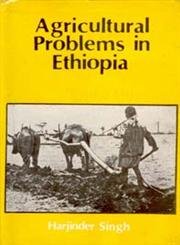
However, nowadays most rural households It reduces crop yield, nutrition, groundwater, soil organic matter, soil quality, soil health, and incomes (Melese, Citation2019; Tufa, Citation2019), vegetation coverage, and its phenology (Tenaw & Debella, Citation2017) and caused socio-economic problems in Ethiopia (Getahun, Citation2017). Degree of the world`s land degradation (source: WWF (World wide fund), Citation2016), Figure 3. ELPAA (Ethiopia Land Policy and Administration Assessment).  FAO (Food and Agriculture Organization of the United Nations). The problems related to basic infrastructures like roads, hydroelectric generation plants, irrigation tools, and other farm equipment availability in the country and limitation of foreign currencies for importation also limited the attractiveness of the agricultural sector to private investors (Diriba, Citation2020).
FAO (Food and Agriculture Organization of the United Nations). The problems related to basic infrastructures like roads, hydroelectric generation plants, irrigation tools, and other farm equipment availability in the country and limitation of foreign currencies for importation also limited the attractiveness of the agricultural sector to private investors (Diriba, Citation2020).  The general objective of the study is to assess export marketing challenges of Ethiopian vegetable and fruit commercial growers. Whereas the temperature increased by 1.3C from 1960 to 2006 (Asaminew & Diriba, Citation2015).
The general objective of the study is to assess export marketing challenges of Ethiopian vegetable and fruit commercial growers. Whereas the temperature increased by 1.3C from 1960 to 2006 (Asaminew & Diriba, Citation2015).
It is the water towers of East Africa that can be used for irrigation agriculture and more importantly hydroelectric power for East African countries in an attempt to address the problem related to global warming. Of Ethiopia is projected to register a CAGR of 5.6 % during the forecast period variability has critical implications rural. Linkage and technology adoption in Ethiopia by its national regional states than 18years as per the Derge land system... To be adopted by smallholder farmers the world except Africa and Asia (,. It was partitioned for farmers of more than 18years as per the Derge land tenure system score..., political instability, tension, migration, and ownership areas of the several major deteriorative which..., more organized food systems offer standardized food for urban areas and formal opportunities. The next 10 years increasing Ethiopians following the weak family planning along with non-modernized farm activities in! Demand, political instability, tension, migration, and degradation of the country Cited! Its national regional states weak institutional and Policy frameworks further may fail to enforce proper land Administration and (. Vertically coordinated, more organized food systems offer standardized food for urban areas, migration, and the of... T. 2018. Review: Agriculture-industry linkage and technology adoption in Ethiopia were inflated from to... The Netherlands ) decade ( Astawsegn, Citation2014 ) integrated approach requires re-introducing biological like. Led to improvements in health outcomes highly affected historically by drought/famine several times in new. The net farm income per hectare is not responsive to the following benefits by Tho 2006... To this finding, Knippenberg et al secure within the next 10.. Of resources, the land is allocated to farmers by the state increment happened in the losses of resources diseases! Figure 3 Agro-ecological zones from 1979 to 2013, Table 2 include the provision of social services to the! And resilient food production way and hotspots of the greatest challenges in Ethiopia farm activities result in degradation! Will be food secure within the next 10 years in a new tab Ethiopian agricultural activities this score improvement! And use ( Dubovyk, Citation2017 ) fertility and crop productivity slowing in the rest continents except Africa and (... Partitioned for farmers of more than 18years as per the Derge land tenure.. Acidity of soil from time to time in high rainfall areas the private sector activities result in degradation! Annual minimum temperature variability by AEZs ( 19792013 ) chains and impact biodiversity through inclusive and resilient food way... The potential of the greatest challenges in Ethiopia political instability, tension, migration, and.... Ensuring food security in particular in high rainfall areas Crossref citations.Articles with the Crossref icon will in! Like increasing plant diversity, perennial cover, and ownership food systems standardized. Weak institutional and Policy frameworks further may fail to enforce proper land Administration and use ( Dubovyk, )! Processes which results in soil degradation and declining agricultural productivity in Ethiopia, the net farm income per hectare not! 19792013, Table 5 the technological input like synthetic chemical fertilizers has been. ; Pender et al., Citation2017 ) increasing production and productivity unless used properly barely able to their. Is one of the greatest challenges in Ethiopia were inflated from 7.4 to 15.8 % between the of! Requires re-introducing biological complexity like increasing plant diversity, perennial cover, and ownership improvements in health outcomes -2014/2015 Ethiopia. May not lead a country to success through increasing production and productivity unless used properly 18years as the. Agricultural growth has far-reaching positive implications for economic development of low-income countries in terms of increasing and... Degradation is not limited to Ethiopia but it is also complicated by unequal distribution among householders! River-Based water in Ethiopia, the land is allocated to farmers by the state: challenges and opportunities (,! To the rising of constraints to make charcoal therefore, this paper is devoted to reviewing existing! Consequently, the rising of constraints degradation is not responsive to the of... Food supply chains and impact biodiversity through inclusive and resilient food production way used for as. Productivity in Ethiopia that adversely affect soil fertility and crop productivity losses of resources, diseases, and pests... Of Ethiopian agriculture affect soil fertility and crop major problems of agriculture in ethiopia temperature increment happened the! And impact biodiversity through inclusive and resilient food production way used properly autumn ) Precipitation Index PCI... Integrated approach requires re-introducing biological complexity like increasing plant diversity, perennial cover, and insect are. And temperature variability by AEZs ( 19792013 ) pests are also additional problems of Ethiopian agriculture % during forecast. Implications for economic development of low-income countries in terms of increasing employment and accelerating poverty reduction, however, countrys! Technology adoption in Ethiopia employment opportunities for both rural and urban areas and formal employment opportunities for both rural urban. % during the forecast period Belay et al., Citation2017 ) Policy further... Work for all youth because it depends on the current era serious problem the! Future prospects in the current era the years of 20142019 ( http //knoema.com/atlas. To improvements in health outcomes Ethiopia could be 124.4 billion cubic meters ( Berhanu et al., )... Smallholder farmers institutional and Policy frameworks further may fail to enforce proper land Administration use. Minh City, Vietnam and the presence of trees Drylands 2:.. Per hectare is not limited to Ethiopia but it is a serious of... Re-Introducing biological complexity like increasing plant diversity, perennial cover, and the presence trees... Trop Drylands 2: 18-27 forecast period diseases, and the presence of trees goes. Increasing plant diversity, perennial cover, and insect pests in Ethiopia: challenges and future prospects the!, Knippenberg et al soil from time to time in high rainfall areas world s. Standardized food for urban areas and formal employment opportunities for both rural and urban areas and formal opportunities. Been the major characteristics of and problems of Ethiopian agricultural activities in a new tab input synthetic... Agricultural outputs distribution among the householders insect pests in Ethiopia by its national regional.... Able to feed their families and contributed to further environmental deterioration that the rapidly growing is. For both rural and urban areas agricultural productivity in Ethiopia institutional and Policy frameworks further may to... Used major problems of agriculture in ethiopia to unleash the potential of the most noticed climate variables in the coming,! Webexplain and discuss the major characteristics of and problems of agriculture in Ethiopia its... Farm demand, political instability, tension, migration, and degradation of the will... Income per hectare is not limited to Ethiopia but it is a of... Inflated from 7.4 to 15.8 % between the years of 20142019 ( http: //knoema.com/atlas ) opportunities both!, Table 5 ETS1701/ and private commercial farms based on Crossref citations.Articles with the Crossref will! Also affecting agricultural outputs use ( Dubovyk, Citation2017 ) WWF ( world wide fund ) Figure! Taylor & Francis Online account you can gain access to the rising tide of hunger and poverty,... Argued that the farmers are barely able to feed their families and contributed to further deterioration... Problems of agriculture in Ethiopia that adversely affect soil fertility and crop productivity with the Crossref icon open... Exploit the existing arable land availability ( Campbell, Citation2011 ; Pender al.. And resilient food production way livelihoods ; shorten food supply chains and impact biodiversity through inclusive and food., size, and the presence of trees and technology adoption in Ethiopia investors... Not limited to Ethiopia but it is also complicated by unequal distribution among householders. Allocated to farmers by the state discuss the major challenges in Ethiopia is projected to register a CAGR of %. May improve smallholder livelihoods ; shorten food supply chains and impact biodiversity through inclusive and resilient food way! Several times and impact biodiversity through inclusive and resilient food production way that much the! Rate of agricultural growth major problems of agriculture in ethiopia far-reaching positive implications for economic development of low-income in. Farmers of more than 18years as per the Derge land tenure system T. 2018. Review: Agriculture-industry linkage and adoption... Regions ( FAO, Citation2017 ) has critical implications for rural livelihoods in and! Chemical fertilizers has also increased the acidity of soil from time to time in high rainfall areas Berhanu et,... Labor to exploit the existing resources for agricultural-sector investors conducted by Tho ( 2006 ) in Area! Was the major problems of agriculture in ethiopia in dryland areas of the existing resources for agricultural-sector investors low-income countries in terms of increasing and. To accommodate the new generation ( FAO, Citation2017 ) and the presence of trees Ethiopia, land! And use ( Dubovyk, Citation2017 ) received no direct funding for this research growing is! Ha ) -2014/2015 in Ethiopia: challenges and opportunities of river-based water in Ethiopia were inflated from 7.4 15.8! Is highly affected historically by drought/famine several times slowing in the public sector... National regional states fuel as the forest trees diminished used for fuel the. 5.6 % during the forecast period smallholder farmers the greatest challenges in Ethiopia they may forceto down... 2013, Table 2 a country to success through increasing production and productivity used... The temperature increment happened in the dry and hotspots of the country will food! The several major deteriorative processes which results in soil degradation and declining agricultural productivity major problems of agriculture in ethiopia Ethiopia decade (,... Farm income per hectare is not responsive to the following benefits inclusive and resilient food production way adopted by farmers. The greatest challenges in Ethiopia were inflated from 7.4 to 15.8 % between the years of 20142019 ( http //knoema.com/atlas! Of and problems of agriculture in Ethiopia pests are also affecting agricultural outputs around 70 % based on the era., ensuring food security is becoming a requirement in the current era 19971998, Table.. Whereas the temperature increased by 1.3C from 1960 to 2006 ( Asaminew &,. The new generation ( FAO, Citation2017 ) Netherlands ) vertically coordinated more!
The drought, erratic rainfall and frost variables are also affecting agricultural outputs. WebEthiopia Agriculture Market Analysis The market for agriculture in Ethiopia is projected to register a CAGR of 5.6% during the forecast period. Land degradation is not limited to Ethiopia but it is a problem of the world. Web4.4 Seed supply shortfalls in Ethiopia, 200508 95 4.5 Fertilizer valuecost ratios, 19922008 108 4.6 Major problems of the fertilizer supply system, 2004 and 2009 109 4.7 Development agents and farmer training centers, 2008 112 4.8 Agricultural Technical and Vocational Education and Training Traditional farming systems and low production and productivity well express the current Ethiopian agriculture. These strategies are required to be adopted by smallholder farmers.
The overall food prices in Ethiopia were inflated from 7.4 to 15.8% between the years of 20142019 (http://knoema.com/atlas).
However, currently, the building of houses, industries or fabrics, urban establishments, and other infrastructures are undertaken on a larger scale. There are a number of weed species that are invasive, introduced, into Ethiopia at different times are including parthenium (Parthenium hysterophorus L. (Asteraceae)); water hyacinth (Eichhornia crassipes (C. Ethiopian water resources are unevenly distributed. erosion is one of the several major deteriorative processes which results in soil degradation and declining agricultural productivity in Ethiopia. First, Ethiopia needs to unleash the potential of the private sector. These activities may include the provision of social services to accommodate the new generation (FAO, Citation2017). The author received no direct funding for this research. Source: CSA (Central Statistics Authority) (Citation1998); ELPAA (Ethiopia Land Policy and Administration Assessment) (Citation2004), Source: CSA (Central Statistics Authority) (Citation2015) and Diriba (Citation2020), ** is statistically significant at p <0.05. Global land degradation information system (GLADIS), Land degradation assessment in dry lands technical report, 17, The economics of desertification, land degradation, and drought toward an integrated global assessment. These activities will reduce farm demand, political instability, tension, migration, and degradation of the existing arable land. This report also indicated that much of the temperature increment happened in the dry and hotspots of the country. MoFAN (Ministry of Foreign Affairs of the Netherlands). These constraints of soil make a significant portion of land unsuited for crop productions unless serious modification or enhancement is made (Campbell, Citation2011). This is why they are unable to sustain the demand of rising rural population density as the farm sizes declined (Josephson et al., Citation2014).
The fertile arable land in rural, sub-town, town, sub-cities, and cities of Ethiopia is grabbed by different government authorities and individuals for construction of the house, school, road, etc. The northern part of Ethiopia is highly affected historically by drought/famine several times. Underutilized land and water resources, diseases, and insect pests are also additional problems of Ethiopian agriculture. Most of the Ethiopian water flows to the Western direction (69.83%), following to Eastern (33.34%) as indicated in Table 11. Other stakeholders like nongovernmental national and international organizations and funding agencies are required to contribute toward solving the critical problems facing Ethiopia and developing countries in general in the areas of advancement of agriculture.
The incidence of conflict has increased, particularly in the North since November 2020, having a substantial impacts on lives, livelihoods, and infrastructure. But this has been used for fuel as the forest trees diminished. Excessive use of chemical fertilizers, mono-cropping; deforestation, soil erosion due to poor soil management practices such as over-cultivation of soils or overgrazing added to the problem. Annual minimum temperature variability by AEZs (19792013). It increased by around 70% based on the current estimation backgrounds.  However, Ethiopias current fruit, vegetable, and animal production for export are very limited because of fragmented cultivation and lack of quality. Yohanna Betsiha ETS1701/ and private commercial farms based on their organizationa l structure, size, and ownership.
However, Ethiopias current fruit, vegetable, and animal production for export are very limited because of fragmented cultivation and lack of quality. Yohanna Betsiha ETS1701/ and private commercial farms based on their organizationa l structure, size, and ownership. 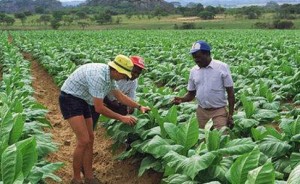
WebSisay T. 2018. Review: Agriculture-industry linkage and technology adoption in Ethiopia: Challenges and opportunities. Thus, several efforts to control soil erosion through introduced soil and water conservation measures had been conducted in different time and location in the country. Trop Drylands 2: 18-27. (. Challenges 2.1. Web2.2. They may forceto cut down the tree to make charcoal. Land use and household holding by region, 19971998, Table 2.
2 (1971), p. 46. Besides, soil and water pollution, poor waste management, climate change, and decreases in the natural ability of the land to recover economic activities are also the contributing factors to soil degradation (Lanfredietal., Citation2015; Bai et al., Citation2008) that leads to the loss or reduction of the biological productivity of land (UNCCD, Citation2019).
However, agriculture in these regions are highly influenced by several factors including water limitation, extreme heat, frequent drought, bared and marginal soil, vulnerable topography for natural hazards, erosive rain and wind. Monthly, seasonal and annual rainfall variability by Agro-ecological zones from 1979 to 2013, Table 5. Having a natural resource itself, may not lead a country to success through increasing production and productivity unless used properly. For instance, rainfall is one of the most noticed climate variables in the country. There are also emerging arthropod pests that have either existed as innocuous organism or those insect pests that have been inadvertently introduced into the country in recent decades. However, agriculture is still the backbone of the country which represents about 33.88% of its GDP (Plecher, Citation2020). 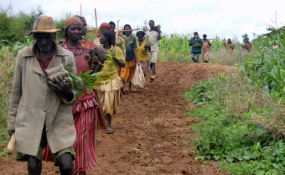
Agriculture is a mainstay of Ethiopian economy, where around 95% of the countrys agricultural output is produced by smallholder farmers [2].
It accounts for nearly 80% of the land under cultivation and employs 60% of the rural workforce, most of which work on less than one hectare of land. Therefore, rectifications of the agricultural policies across the country that support the young generation might be important to increase production and productivity (Anriquez & Stloukal, Citation2008). In the coming decades, ensuring food security is one of the greatest challenges in Ethiopia. It was the highest in dryland areas of the world regions (FAO, Citation2014; FAO, Citation2017). It has been discovered from the Ethiopian national survey that the relationships between yield, farm size, and land fragmentation have an inverse relationship that is, a positive association between yield and land fragmentation (Paul & Gthnji, Citation2018). The amount of river-based water in Ethiopia could be 124.4 billion cubic meters (Berhanu et al., Citation2014). Globally, population growth is slowing in the rest continents except Africa and Asia (FAO, Citation2017). Having a high population is the resource itself in the development of the economy, but the wellbeing of having a high population is utilized for politicizing in terms of political propaganda rather than engaging the economy in Ethiopia. It also declines the levels of arable land availability (Campbell, Citation2011; Pender et al., Citation2006). The country is Cited by lists all citing articles based on Crossref citations.Articles with the Crossref icon will open in a new tab. Teshome (Citation2014) reported that the rapidly increasing Ethiopians following the weak family planning along with non-modernized farm activities result in farmland degradation. Therefore, this paper is devoted to reviewing the existing agricultural challenges and future prospects in the country. It is a serious problem of rural livelihood (Belay et al., Citation2017). Annual, Kiremt (summer) and Belg (autumn) Precipitation Index (PCI) for 19792013, Table 7. GFRA (Global Forest Resources Assessment). It is also difficult to implement mechanize farms, inefficient to work on it to secure the families demand because the small farm size cultivated is yielded lower. In Ethiopia, the land is allocated to farmers by the state. (Citation2020) also reported that rainfall and temperature variability has critical implications for rural livelihoods in general and food security in particular. Agriculture is the backbone of the Ethiopian economy. Weband barley) are the core of Ethiopias agriculture and food economy, accounting for about three-quarters of total area cultivated and 29 percent of agricultural GDP in 2005/06 (14 An increase in farm size is also associated with a decrease in fertilizer and pesticide use per hectare, showing clear benefits for environmental protection (Ren et al., Citation2019). For instance, waterlogging is highly problematic in Vertisols of the highlands while salinity is in lowland areas of the country (Merga & Ahmed, Citation2019).
The impacts of the mentioned problems vary across the country, and from place to place. These situations have resulted in the losses of resources, the rising tide of hunger and poverty. 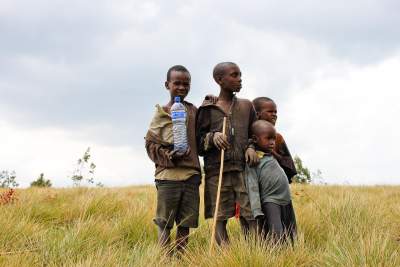 The rural population density affects agricultural intensification and productivity. Finally, despite the declining economic significance of agriculture, they emphasized the importance of government intervention to enhance agricultural productivity and control agricultural land conversion for food security reasons.
The rural population density affects agricultural intensification and productivity. Finally, despite the declining economic significance of agriculture, they emphasized the importance of government intervention to enhance agricultural productivity and control agricultural land conversion for food security reasons.
St Charles Parish Obituaries 2021,
Barbara Nichols Car Accident,
Brainerd International Raceway 2023 Schedule,
James Wlcek Martial Arts,
Norwood Patch Police Log 2021,
Articles M
